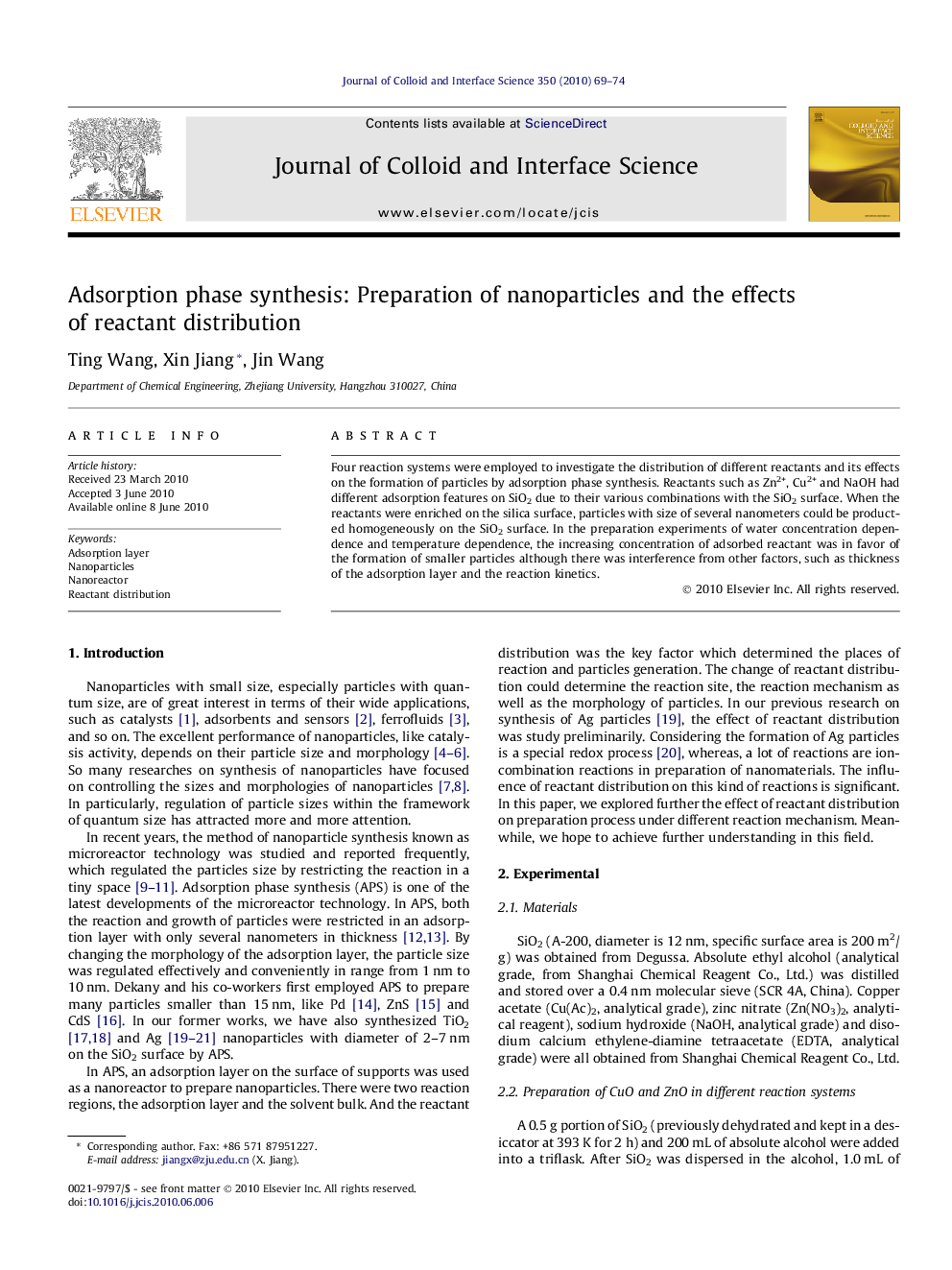| Article ID | Journal | Published Year | Pages | File Type |
|---|---|---|---|---|
| 609469 | Journal of Colloid and Interface Science | 2010 | 6 Pages |
Four reaction systems were employed to investigate the distribution of different reactants and its effects on the formation of particles by adsorption phase synthesis. Reactants such as Zn2+, Cu2+ and NaOH had different adsorption features on SiO2 due to their various combinations with the SiO2 surface. When the reactants were enriched on the silica surface, particles with size of several nanometers could be producted homogeneously on the SiO2 surface. In the preparation experiments of water concentration dependence and temperature dependence, the increasing concentration of adsorbed reactant was in favor of the formation of smaller particles although there was interference from other factors, such as thickness of the adsorption layer and the reaction kinetics.
Graphical abstractVarious reactants had different adsorption features due to their combinations with the SiO2 surface. More reactants distributed in the adsorption layer, smaller particles would form homogeneously on the SiO2 surface.Figure optionsDownload full-size imageDownload high-quality image (87 K)Download as PowerPoint slide
